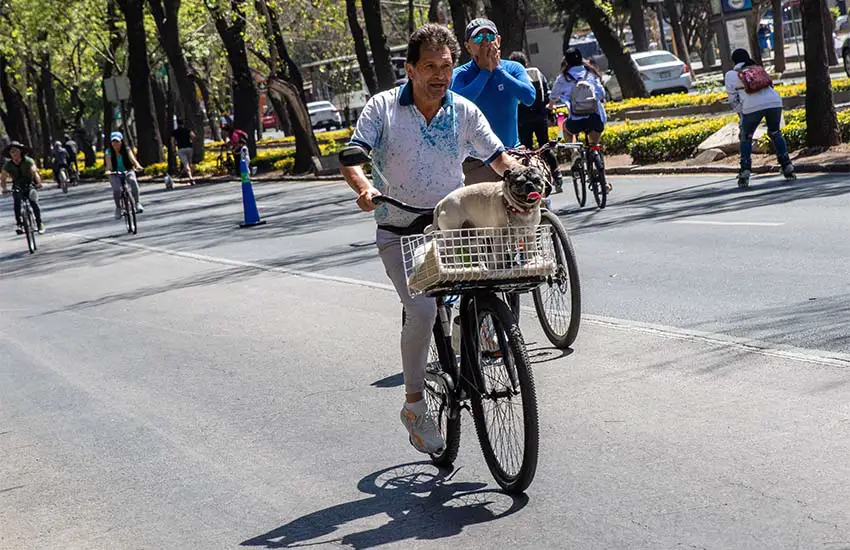When my husband and I first visited Guanajuato in 1999, we were enchanted by the vibrant, colorful city and its friendly residents. Delightful as it was, though, there was one aspect of life that disturbed us greatly: seeing dogs kept in captivity on roofs, at times howling mournfully away. We tried to be accepting of this particular aspect of Mexican culture, but it was a challenge — something that has changed in recent years.
Since then, we have bought a house in the city, where we now live part of the year, and we contribute to local bicultural nonprofits such as Amigos de los Animales, which spays dogs and cats and promotes the humane treatment of animals. Partly thanks to the dogged persistence of this volunteer organization, we have observed a huge paradigm shift in the local treatment of animals. Not only are dogs on rooftops much less common, but many more Mexicans now have a personal relationship with their pets rather than using them only for security purposes. We often see people walking their dogs.

This transformation is just one of many changes we’ve observed in Guanajuato and elsewhere in Mexico. Here are six others:
Romantic relationships
Whereas when we first came to Guanajuato, all our teachers were either married or wanted to be, now only two of our former teachers are married (significantly, they’re both men). Our first teacher, a law professor in her 40s who lives in Mexico City, shows no interest in marrying or having kids. Another is divorced and lives with her high school novio in Querétaro; her adult sons live in Guadalajara, near her ex. A third teacher is in her mid-thirties and single. Another has had an abortion (which, with its decriminalization in 2023, is a foundational change, making it dramatically easier to terminate a pregnancy in Mexico than in many U.S. states).
We also see same-sex couples walking down the street holding hands, and it’s no big deal—even in Guanajuato, which is one of Mexico’s more conservative states. Impossible in 1999!
Availability of organic and ethnic food

Unbelievably, for a coffee-exporting country, I can remember bringing down coffee from the U.S. when we first came here! Now you can find Chiapas or Veracruz coffee anywhere. In health food stores and certain chain supermarkets like La Comer, you can buy gluten-free, sugar-free, organic foods, as well as Asian and other ethnic foods like tofu, miso, arborio rice, coconut milk, and so on. Twenty years ago the only international food I remember seeing on a supermarket shelf was low-quality soy sauce.
Along with an expansion of foods, we see a wide variety of ethnic and organic restaurants, from Lebanese to Thai, Indian to Japanese, vegan to Mediterranean. These restaurants proliferate not just in Guanajuato, but in other cities we’ve visited.
As for drinks, while beer and tequila are still Mexican favorites, wine has a much larger footprint than it did a generation ago, and Guanajuato even hosts a wine festival every year. If you haven’t tried Mexican wine, you’re in for a treat.
Fitness activities
As long as we’ve lived in Guanajuato, we’ve always been able to find gyms, Zumba classes, and martial arts centers, but the availability of classes offering mind-body modalities like yoga, Pilates, Tai Chi, and qigong has increased hugely.

Outdoor fitness activities like hiking, rock climbing, trail running, and mountain biking are also much more common. Mountain bikers sporting their Lycra fitness shorts regularly wheel through Guanajuato’s uneven streets (speaking of shorts, you never saw anyone wearing them before, whereas now you do occasionally, though they’re still not completely accepted).
One type of sports equipment I rarely see in Mexico is the manual scooter. I would have expected it to be very popular because it’s so lightweight and less expensive than a bicycle.
Transit
Guanajuato has much more traffic than twenty years ago, and nowadays, streets are frequently backed up. Worse, the ancient buses still emit diesel fumes. With the city’s narrow streets and many climbing alleys, it’s not particularly bike-friendly. Mexico City, Querétaro, Monterrey, and Puerto Vallarta are way ahead in offering dedicated bike paths, and Mexico City’s EcoBici program is now the largest in Latin America.
Increase in U.S. expats
In the last four years, the number of U.S. citizens applying for temporary residency cards in Mexico more than doubled, from approximately 5,400 to 12,300. This is a mixed bag. While expats can contribute good to the community, we also bring gentrification (as we have discussed before), leading to a glut of Airbnbs and higher rents, which makes most homes, especially in city centers, out of reach for locals.
Changes in environment and climate

As anyone who has been in Mexico in the last three months knows, the climate crisis has brought extreme heat, drought, and water shortages that threaten the viability of life here.
Of course, many things have not changed, and one of them is the kindness and friendliness of the Mexican people. I’m often surprised by the lack of hostility I experience in Mexico, given our nations’ shared history and the intermittently unfriendly policies of the U.S. government. Not once have I experienced any resentment directed towards me. While not all the changes in the last 20 years have been positive, I believe the kindness and warmth of the Mexican people is why not a single expat I know regrets calling Mexico home.
Louisa Rogers and her husband Barry Evans divide their lives between Guanajuato and Eureka, on California’s North Coast. Louisa writes articles and essays about expat life, Mexico, travel, physical and psychological health, retirement and spirituality. Her recent articles are on her website, https://authory.com/LouisaRogers
